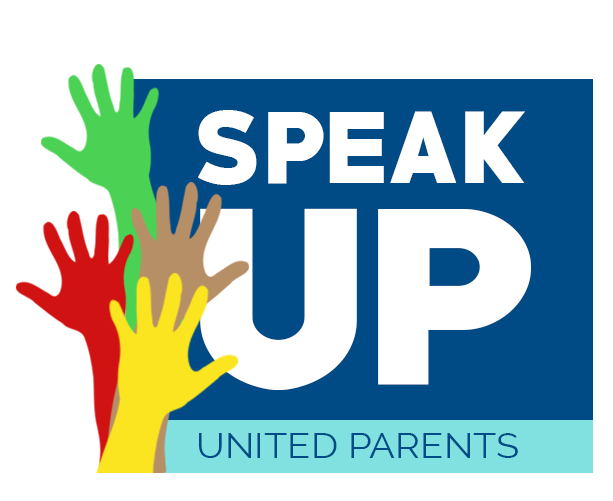A Culture Of Teacher Collaboration Creates Peer Accountability
/By Lindsay Sturman and Dvora Inwood
How do we improve chronically underperforming schools? The LAUSD Board, armed with newfound energy and a commitment to change, is wrestling with this question, and specifically how to bring accountability and urgency to the task. And while we absolutely must speed up the pace of change, one solution may be counter-intuitive: to take the time to build a culture of collaboration.
Dvora Inwood and Lindsay Sturman
If the term “collaboration” doesn’t sound revolutionary, it may be because it actually has two meanings. When used with a little c, collaboration means whatever the speaker feels like it means – working together, kumbaya or “I’ll collaborate and listen, then I’ll do whatever I want.” But with a capital C, Collaboration is a school model that empowers teachers, transforms school culture and produces remarkable results for kids.
A system-wide model of Collaboration has the potential to be a win-win for the district and teachers. Teachers get freedom, and the district gets results that stem from the peer accountability this model creates. And as for parents -- who are forced to navigate this fractious war over how to improve public education – they get a détente so we can all focus on the kids.
In 1998, Richard DuFaur coined the phrase “Professional Learning Community” to describe a school model where teachers make the majority of decisions. Faculty meetings are built around analyzing student progress, analyzing the curriculum and changing direction as needed. In a “PLC,” teachers are given planning time during the day to work as a team. This model is taught at top schools of education (such as UCLA, Stanford and Harvard) and used at top private schools and lab schools, such as Bank Street in New York and UCLA Lab School in Los Angeles.
PLC is also known as Consensus Decision-Making, or Collaboration, and it has several enormous benefits. Most importantly, it empowers teachers to make the best decisions for their students. Principals, trained in the model, work with teachers to come to collaborative decisions. Nothing moves forward unless everyone agrees. (It’s also similar to the decision-making process for groups like Student Non-Violent Coordinating Committee during the Civil Rights movement). In this model, principals and districts do not make unilateral decisions and ram through curriculum changes or reforms. Decisions are made thoughtfully with full buy in.
This makes sense because there is no perfect curriculum out there. If there were, everyone would use it. For example, Everyday Math and Singapore Math both produce great results, depending on the teachers, students, community, resources and implementation. So if both work, who should decide? It makes sense to let the people responsible for the implementation -- the people who know the students best -- decide. And when teachers pick the curriculum and design the program, they have “skin in the game,” making them highly motivated to make it work. They decided, so if it doesn’t work, it’s their job to fix it or change it.
There are wide-ranging benefits for districts as well. A PLC forces districts out of the role of dictating school policies and curriculum (inputs) and into the role of oversight (outcomes). By setting goals and supporting schools in reaching those goals, districts can step back and let schools figure it out for themselves. Imagine a district of mentors and coaches who inspire and encourage.
When schools officially adopt a PLC culture, accountability infuses every aspect of the school, from contracts to schedules. Teachers have the clearly defined responsibility of documenting how well students are progressing with the curriculum and sharing their findings every week or two. If a teacher shows up to meetings empty handed, everyone notices, helps and/or pushes back. So while districts, unions and reformers work through the difficult process of creating a holistic teacher evaluation system, this model can create a quiet peer accountability that is both effective and uncontroversial.
Another unexpected benefit of teachers practicing consensus decision-making is the impact on the larger school culture, extending to students and parents, creating a virtuous cycle. Parents who feel heard become advocates and hard workers — volunteering and bringing solutions. Students who feel heard feel more a part of the school and have fewer discipline problems and higher achievement.
We saw these benefits play out at Larchmont Charter School, a diverse, collaborative K-12 we co-founded in 2005 with 100 other families. While a Collaborative Model was baked into the charter petition, it was a cadre of dedicated teachers and leaders who made it a reality. The success of Larchmont undoubtedly has to do with the energy of the parents, the magic of a diverse community and the progressive curriculum, but there was another “secret sauce”: the culture of collaboration. Teachers design the program and change it as needed. They create a school culture that supports kids and families (and further supports our core value of diversity), which has enabled Larchmont to attract and retain intelligent, creative, dedicated teachers. By a variety of measures, including standardized tests, we have seen strong academic outcomes that have almost erased the achievement gap.
While reformers and unions may never agree on many things, they can find common ground in a Collaborative model. It can assuage the union’s greatest fears (unfair firing, an abusive work environment), while fulfilling reformers’ greatest hope – that underperforming teachers will be supported to improve or pressured to move on. By bringing this model to LAUSD, Los Angeles can be a national leader in not just a collaborative model, but collaborative reform.
-- The authors have worked together to help start diverse, progressive, high-performing charter schools in Los Angeles: Larchmont Charter, The City School, CLIC, and Valley Charter School.





